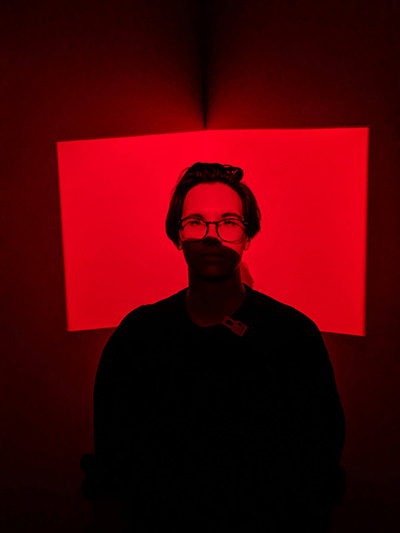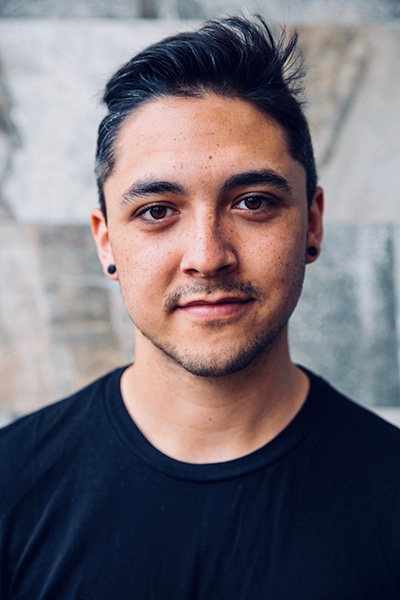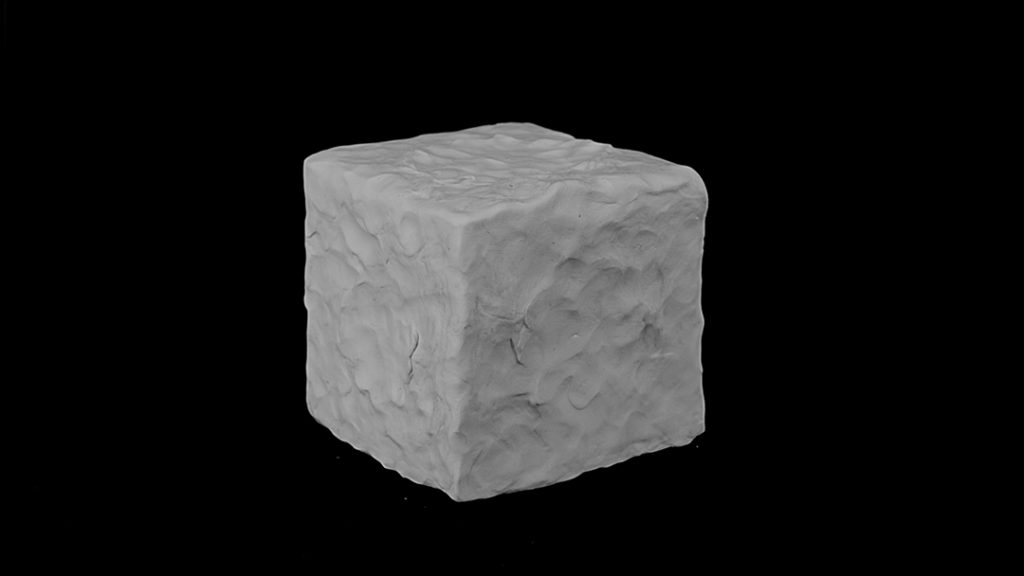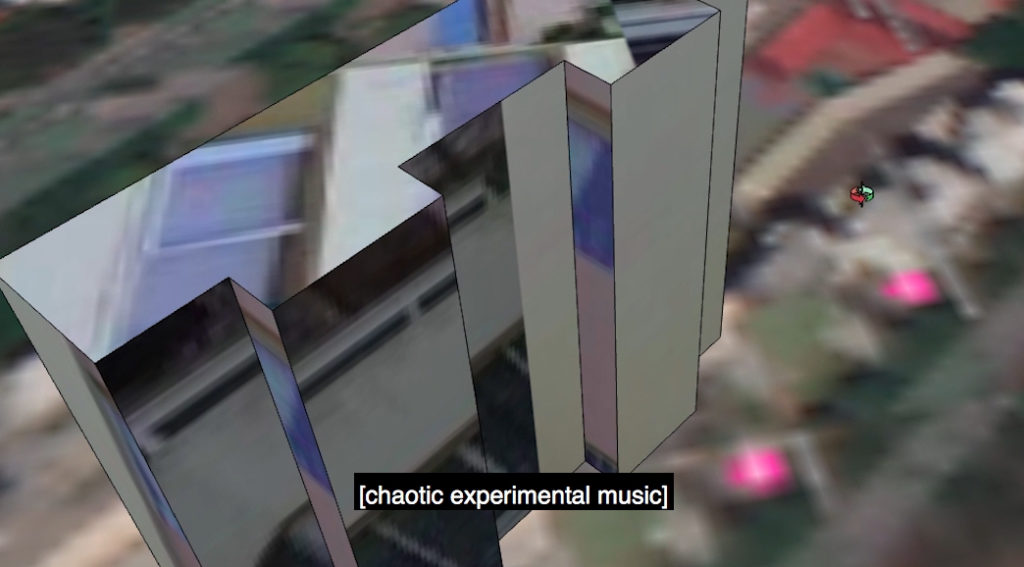Jawa El Khash
The Upper Side of the Sky, 2019
Virtual Reality, 10:00
The Upper Side of the Sky is a virtual reality experience that resurrects archeology and recontextualizes elements from the natural world that are now endangered or non-existent as a result of war and destruction. This digital ecosystem consists of a greenhouse, courtyard, chrysalis chamber, and other destroyed monuments from the ancient Syrian desert Palmyra. While the physical monuments are irreplaceable, their photo-realistic reconstruction offers solace, and allows us to experience them through memories of the past.
Jawa El Khash is an artist and researcher. Her work blurs the lines between fantasy and reality, using technology such as virtual reality and holography to investigate the paradoxes and obscurities of everyday life. Through her practice of studying optics, 3D, and VR technology, she creates replicas of reality.
Kanika Gordon
Welcome to the Alter-Ego Citadel, 2020
Video, 14:22
Welcome to the Alter-Ego Citadel is an experimental video that explores concepts of safety and security in digital spaces. Set in a world that closely resembles our own, the digital sphere acts as both a prison and portal to freedom. As viewers, we are transported inside the inner workings of the dark web, including hyper-surveilled chat rooms with encrypted messages. Pointing to themes surrounding the surveillance state, gender identity, and safe spaces, the work acts as a mirror held to society: as viewers we are asked to consider our own relationship to digital tools, which have the ability to bring us together or tear us apart.
Kanika Gordon is a digital media artist who tells compelling stories through a futurist lens. Her work explores the relationships between society, culture, and justice with a focus on revisiting the past to secure the future. Combining still and moving images with expansive soundscapes, she creates speculative worlds that engage viewers to seek out answers for themselves. (Photo: Justine Nelson)
Alison Postma
A Point, A Line, A Surface, A Solid, 2016
Video, 4:12 (looping)
A Point, A Line, A Surface, A Solid is a claymation video based on the most basic building block of digital media: the pixel. Represented as an oscillating cube, the pixel at first appears to be a simple digital object rendered with animation software. In fact, the cube is crafted out of clay by the artist’s hands, and each movement represents a very physical intervention in space. The elemental form of the cube, along with the simplistic movement of the animation heightens a tension between analogue and digital media, and ultimately questions the relevance of this distinction in our daily lives.
Alison Postma is an artist based in Toronto. Her practice is multidisciplinary, with an emphasis on photography, video, and sculpture. Her works explore thematic interests that include the relationship between objects and the body, skewed perception in alternate states of reality, and perspectives on past, present, and future. (Photo: Nick Vo)
Camila Salcedo
Alternate Reality
(Santa Paula, El Cafetal, Caurimare, Caracas), 2020
Video, 5:30
Alternate Reality is a video collage composed of 3D imagery and found video that attempts to recreate the neighbourhoods where the artist grew up in Caracas, Venezuela. Google Street View, which was banned in the country, is notably absent from the work—something Salcedo points to as a barrier to being able to digitally revisit her home country to which she has never returned. The artist grapples with how to fill the gaps of her memory with what is available online, forming what is destined to be an alternate version of a place that exists somewhere between reality and the public digital domain.
Audio: Felipe Martin
Camila Salcedo is a Caracas-born, Toronto-based curator, community organizer, and interdisciplinary artist who holds a BFA from NSCAD University. Her practice is actively informed by her lived experience, and is rooted in unlearning, questioning, and dismantling systems that define us, including nations, identity, politics, and migration.
Lisa Smolkin
Life’s lil Bitch, 2019
Video, 16:06
Life’s lil Bitch is a video that investigates ancestral trauma, social failure, and the frustration of limited social status in today’s world. Featured as the main character in the narrative, the artist must deal with internalized ideas of social and professional binaries of success. Through farce and comedy, she brings us on an existential journey marked by deep personal inquiry and the confusing “hells” of both interpersonal and intrapersonal exchange. The dreamscape anti-narrative driving the work mirrors the experience of going down an internet rabbit hole, where a simple keyword search leads from one thing to another (to another).
Featured Music: Liz Brain
3D Avatar: Alisson Escobar
Video Production: Zak Tatham
Lisa Smolkin is a Toronto-based artist working in performance, video, and drawing. Her practice explores themes of selfhood and feminism by incorporating elements from popular culture and healing traditions within humorous narrative structures. Giving voice to the underdog, she creates works that explore concepts of personal worth through farce. (Photo: Halloway Jones)
Adrien Crossman is an artist and curator, as well as an Assistant Professor of Studio Art at McMaster University in Hamilton. They hold an MFA in Visual Art from the University of Windsor (2018). Adrienne has exhibited at Patel Projects (Toronto, Ontario), Moscow Biennale for Young Art (Moscow, Russia), and The Wrong New Digital Art Biennale. Their practice investigates the liminality between the digital and the physical, considering how the terms trans* and non-binary apply to digital media as well as gender.

Photo: Tobias Williams
Maize Longboat is Kanien’kehá:ka from Six Nations of the Grand River and was raised on the unceded territory of the Sḵwx̱wú7mesh Nation near Vancouver, BC. He is the Skins Workshops Associate Director with Aboriginal Territories in Cyberspace (AbTeC) and the Initiative for Indigenous Futures (IIF). He holds an MA in Media Studies from Concordia University. His MA research examined Indigenous videogame development through the production of his own game, Terra Nova, an award-winning cooperative platformer with an interactive narrative.

Photo: Kamakanioka’āina Paikai
Philip Leonard Ocampo is a queer Filipino artist and curator based in Tkaronto, Canada. Ocampo’s practice primarily involves sculpture, installation, and public programming. His work usually explores phenomenon, magic, and memory, using the extraordinary as a conduit for reconciling and better understanding personal and collective experiences.
He holds a BFA in Integrated Media from OCAD University (2018) and is currently a Programming Coordinator at Xpace Cultural Centre and one of the four founding co-directors of Hearth, a new artist-run space in Toronto.

Photo: Sophia Oppel
Shaheer Tarar uses satellite images, found footage and legal documents to trace historical events to the role they play in the contemporary moment. He pursues stories buried by time, space and code—studying artifacts from these stories that still remain and mediate our relationship to the past. These studies are presented as publications, websites, large prints or multi-channel films.





